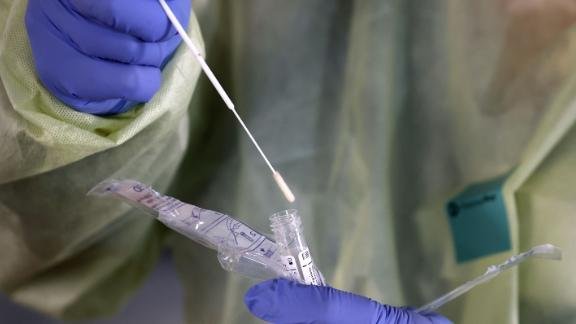White House: Oregon among bottom 4 states in virus testing capacity

SALEM, Ore. (AP) — The White House told governors their leadership is critical in testing for the coronavirus, providing a map showing that Oregon is among four states with the lowest testing capacity in the United States.
Oregon, Montana, Oklahoma and Maine are able to test fewer than 30 in 1,000 people a month, according to an email sent Monday by the White House coronavirus task force.
The states with the highest monthly testing capacity — more than 90 in 1,000 people — are Wyoming, Utah and Vermont, the email said.
Rapid and efficient testing is needed to identify where the virus is emerging and allow authorities to track people who may have been exposed, according to the email, which Democratic Gov. Kate Brown’s office released after a public records request by The Oregonian/OregonLive. Testing also gives states a tool as they decide when and how to start lifting stay-at-home orders.
The White House email “demonstrates clearly what we have been telling them for weeks: We need additional testing capacity, and we are dependent on the federal government to provide us with the testing materials we need,” said Charles Boyle, Brown’s spokesman.
“We are asking the administration, again, to give us a clear answer about what testing supplies they can send to Oregon, and when we can expect to receive them,” he said.
Montana Gov. Steve Bullock, a Democrat, said the number of testing machines is only part of the equation.
“All the machines in the world won’t make a difference if we can’t get the test kits and other supplies needed to run the tests,” Bullock said.
Washington Gov. Jay Inslee, a Democrat, said the email doesn’t answer governors’ “repeated calls” to address a lack of supplies.
“We cannot unlock the full capacity of our labs without additional testing supplies and infrastructure from the federal government,” Inslee said.
The White House email acknowledged those shortages.
“We are working together to address the issues that have been raised from technical support, to insufficient laboratory personnel, to insufficient funding, to swabs, transport media, tubes, extraction reagents and test kits,” it said.
The email listed dozens of hospitals, universities and medical centers that perform testing in Oregon, but only one lab capable of processing lots of swabs at one time.
The Oregon Health Authority, meanwhile, announced Tuesday that it revised guidelines for COVID-19 testing to prioritize at-risk groups and front-line workers.
The guidelines urge health workers to potentially increase testing for those living or working in group facilities; those part of underserved and marginalized populations, including racial and ethnic minority groups; and essential workers, including medical and grocery store employees.
“By focusing clinicians’ attention on testing certain groups — including those most at risk for contracting severe forms of COVID-19 — we are making sure people who need to be tested are getting tested and getting the information and treatment they need to manage COVID-19,” state health officer Dean Sidelinger said.
He said increased testing in specific areas will help authorities and partners understand and manage the epidemic.
Also Tuesday, the health agency announced three more deaths from COVID-19, bringing the state’s total to 78, and 46 additional confirmed cases. Of roughly 41,000 people tested in Oregon, 2,002 have tested positive.
A big component of managing the epidemic, Sidelinger has said, is ensuring that people maintain social distancing and obey closures.
On the Oregon coast, two surfers are accused of ignoring signs about closures at Otter Rock Marine Reserve and climbing over a chain-link fence blocking beach access Monday.
The 20-year-old and 19-year-old men, both of Cottage Grove, were cited for criminal trespassing, the Lincoln County sheriff’s office said.